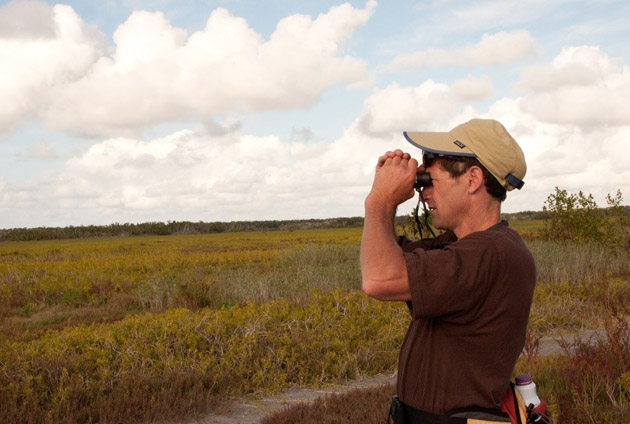
A view of the Wiltshire countryside outside Devizes.Andrew Parsons Media / ZUMA
This story was originally published by the Guardian and is reproduced here as part of the Climate Desk collaboration.
The rolling hills south of Salisbury Plain are a bleak scene of vast arable fields and tightly grazed pasture dotted with scores of sheep.
In recent decades, Lower Pertwood farm has embraced organic growing, producing oats, barley and other crops, while boosting numbers of rare corn buntings and other wildlife with wildflower banks and newly planted trees.
But as wildlife continues to decline in Wiltshire and the farm’s profits plummet amid an increasingly unpredictable climate, the owners are turning to farming nature instead.
The 2,800-acre arable farm begins its transformation this spring into the biggest grassland rewilding project in southern England, in an attempt to restore declining plants, insects and endangered species including cuckoos, grasshopper warblers, and turtle doves.
The “Pertwood Plain” project, masterminded by Restore, a land management company specializing in large-scale restoration led by the naturalist Benedict Macdonald, will ultimately see low densities of pigs and cattle roaming free to recreate flower-rich chalk grassland. This naturalistic grazing, alongside interventions such as adding green hay and brash piles where birds perch and excrete seeds into the soil, will give rise to a mosaic of grass and scrubland teeming with invertebrate life.
In the future, visitors could enjoy the return of extinct species including the great bustard, which has been reintroduced on to nearby Salisbury Plain, and the charismatic red-backed shrike, which became effectively extinct as a breeding bird in Britain in the 1990s.
“It’s enormously exciting,” said Macdonald. “Salisbury Plain on the horizon is like a giant, free seed bank of species, some of which—such as the reintroduced great bustard—might naturally explore Pertwood as it begins to recover.”
Tamara Webster, the director of the family-owned farm, said: “We have been looking, almost subconsciously, for a long time for an all-embracing blueprint for the future. One that can deliver environmental restoration, truly sustainable food production and achieve financial stability and profitability. This is why we commissioned the holistic research by Restore and we are extremely excited about what we hope to achieve together.”
In 2022, this large arable farm on grade 3 farmland (a measure of good to moderate growing soils) made £179,000 profit (about $226,000). The following year, it posted a £180,000 loss ($227,300), spending £135,000 on fertilizer, £65,000 on muck and slurry, £43,000 on red diesel and losing £113,000 on farm machinery depreciation.
The rewilded farm will cut fertilizer and these other costs to virtually zero and sell off its expensive machinery. Staff numbers are expected to remain the same with some retained for new roles such as grazier. Typically, rewilded estates employ more people than conventional agriculture.
An increasing number of traditional farms are turning to nature regeneration as investors bank on speculative future revenues from carbon and biodiversity credits and payments for biodiversity net gain (BNG). This is where developers are legally obliged to “buy” or create natural areas to ensure every new housing estate leads to an uplift in nature.
Pertwood is setting aside a modest 50 acres for BNG and will continue to produce food—organic beef and pork—but its transition has been made financially straightforward by a “wood pasture” funding option in the government’s countryside stewardship scheme. This guarantees the farm annual payments of £300,0000 ($379,000) for 10 years.
The wood pasture funding is proving popular with farmers who have been reluctant to completely stop farming and turn land over to forestry to sequester carbon. To create wood pasture, farmers can continue low-density livestock farming but allow scrub and woods to naturally regenerate and expand over fields to create a mosaic, which benefits a wide range of species and sequesters carbon.
Matt Collis, the lead ecologist at Restore who is measuring soil health and biodiversity at Pertwood, said: “Calcareous grassland is always the most diverse and botanically rich soil type, with 50 or 60 plant species in a few square meters. To get that into its ecological peak is very exciting. The opportunity for surprises is very high here. The soil wants to be abundant, it wants to be rich with wildlife.”















